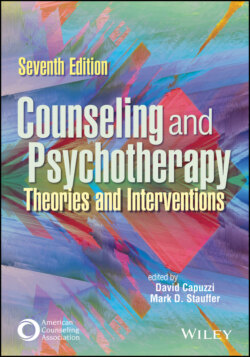Читать книгу Counseling and Psychotherapy - Группа авторов - Страница 107
SUPPORTING RESEARCH AND LIMITATIONS Overview
ОглавлениеAs we previously mentioned, the counseling profession embraced RCT as a theoretical lens for working with a variety of clients and within numerous counseling settings (Alvarez & Lazzari, 2016; E. Brown et al., 2020; Dorn‐Medeiros et al., 2020; Duffey & Haberstroh, 2020; B. Hall et al., 2018; K. Hall et al., 2018; Hitter et al., 2017; Lenz, 2016; Purgason et al., 2016; Singh et al., 2020; Singh & Moss, 2016; Stargell et al., 2020; Storlie et al., 2017). After a systematic literature review and analysis of RCT outcome studies, Lenz (2016) concluded that the literature provides “some initial support for RCT as a framework for understanding client experiences, using instruments that measure RCT constructs, and implementing associated interventions within clinical practice” (p. 423). This review of the literature and related research outcomes showed a mix of qualitative, quantitative, and research assessment instrument analyses. Given that RCT is not a manualized and procedural approach like cognitive behavior therapy, qualitative and mixed-method approaches may best serve to highlight the experiences of clients and counselors who collaborate within an RCT framework. For counseling researchers interested in using quantitative outcome measures to evaluate RCT constructs, the following instruments can aid in these types of studies: the Connection-Disconnection Scale (Tantillo & Sanftner, 2010), the Mutual Psychological Development Questionnaire (Genero et al., 1992), and the Relational Health Indices (Liang et al., 2002). Moreover, counselors can also consider these scales in counseling practice to explore RCT constructs such as mutuality, connection and disconnection, and relational health among the varied social groups to which clients belong.
